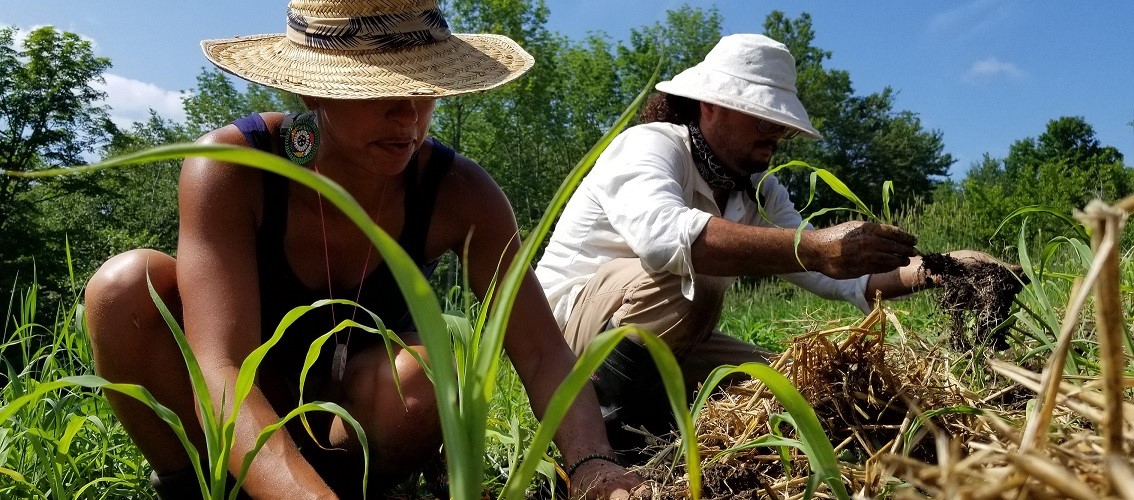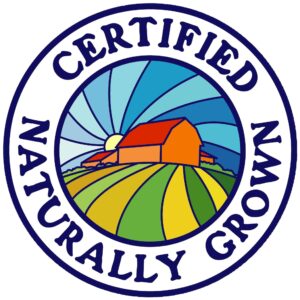At Soul Fire Farm, we use Afro-indigenous agroforestry, silvopasture, wildcrafting, polyculture, and spiritual farming practices to regenerate 80 acres of mountainside land, producing fruits, plant medicine, pasture-raised livestock, honey, mushrooms, vegetables, and preserves for community provisioning, with the majority of the harvest provided to people living under food apartheid or impacted by state violence. Our ancestral farming practices increase topsoil depth, sequester soil carbon, and increase biodiversity. The buildings on the farm are hand-constructed, using local wood, adobe, straw bales, solar heat, and reclaimed materials.
No Till: Rather than rototill the soil to add air and remove weeds, we use heavy mulches to smother the weeds and encourage the worms to do the aeration. This helps keep the carbon in the soil, where it belongs, rather than releasing it into the air.
Cover Crops: Nature never leaves the soil bare. Just as Dr. George Washington Carver encouraged, we use cover crops like peas, oats, and buckwheat to protect the soil from erosion and add important nutrients.
Compost and Manure: We produce as much fertility on site as possible by composting manure from our livestock and crop residues. Cleopatra knew the value of the earthworm in creating compost and went to great measure to encourage their proliferation. Women farmers in Ghana and Liberia produced “African Dark Earth” by combining ash and residue. We emulate these practices to enrich our soils with organic matter and nutrients.
Polyculture: Rather than planting a whole field in just one crop, we integrate dozens of crops in each section. Modeled after the Haitian “jaden lakou” we have fruit trees interspersed among mint, bee balm, and chamomile and other medicines. In our “milpa” we learn from the Mohican farmers, who are the original stewards of this land, about the integration of corn, beans, squash, and sunflowers.
Raised Beds: Just as the Ovambo people have mounded their soils for centuries to control water flow and increase crop root depth, so do we grow all of our crops in raised beds. Our heavy clay soils rely on the pathways for drainage and the raised growing areas reduce compaction.
Heritage Crops & Seedkeeping: We grow dozens of native crops as well as culturally significant African heritage crops. Some of our cherished plant friends at the farm include bee balm, echinacea, moyamensing tomato, West African garden egg, pwa congo, Lenape blue corn, and Eritrean basil. Each year, we save 3-5 seed varieties that are distributed through the Truelove seed catalog.
Silvopasture: The integration of trees and pasture for livestock, is among the top solutions for climate healing in “Drawdown.” We raise small ruminants, like sheep, which are experts at surviving on native grasses and forage with minimal purchased feed. Our silvopasture system includes sugar maples and chestnuts integrated into the fields to provide shade, food, and windbreaks for the animals.
Natural Building: The structures on the land are hand built using locally sourced and natural materials, like adobe, straw bales, and pine timbers. We heat the water primarily with solar energy and warm the buildings with the sun and efficient wood stoves. Whenever possible, we source recycled and reclaimed building materials and design for energy efficiency. The buildings are clustered into just 1.5 acres leaving the remaining acreage for nature.



